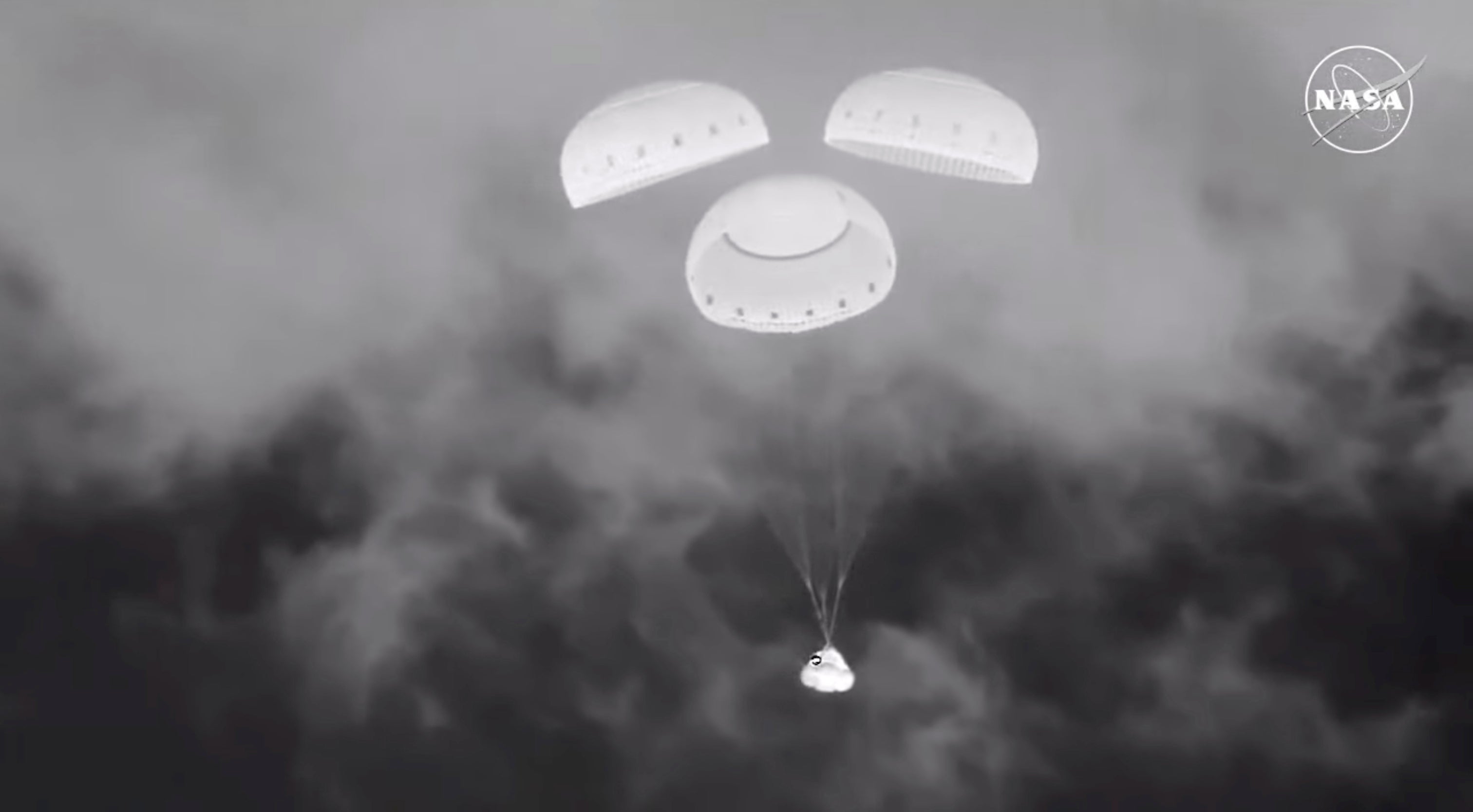Boeing Starliner has returned to earth without its crew - but how long can they safely stay in space?
Space poses health challenges for astronauts who stay there for extended periods of time
Your support helps us to tell the story
From reproductive rights to climate change to Big Tech, The Independent is on the ground when the story is developing. Whether it's investigating the financials of Elon Musk's pro-Trump PAC or producing our latest documentary, 'The A Word', which shines a light on the American women fighting for reproductive rights, we know how important it is to parse out the facts from the messaging.
At such a critical moment in US history, we need reporters on the ground. Your donation allows us to keep sending journalists to speak to both sides of the story.
The Independent is trusted by Americans across the entire political spectrum. And unlike many other quality news outlets, we choose not to lock Americans out of our reporting and analysis with paywalls. We believe quality journalism should be available to everyone, paid for by those who can afford it.
Your support makes all the difference.The Boeing Starliner spacecraft touched down in New Mexico last weekend, missing its crew.
Astronauts Barry “Butch” Wilmore and Sunisa “Suni” Williams will have to wait, NASA leaders said, until February of next year to catch a ride back to Earth. And, much to Boeing’s chagrin, they’ll do it on a SpaceX spacecraft.
At that point, the astronauts will have been onboard the International Space Station for more than 240 days, a far cry from the 9 days they were supposed to spend there.
Right now, the pair are in good health, and are scheduled to take part in a press briefing on Thursday, but their extended trip could result in major medical consequences for parts of the body with critical functions, according to the Baylor College of Medicine’s Center for Space Medicine.

In space, potential threats include:
- Changes in vision
- Changes in the brain’s ability to input data it receives from muscles and internal organs
- Decreases in blood volume and the body’s aerobic ability
- Increases in irregular heartbeats
- A decrease in the function of the gastrointestinal system
- Cancer risks given the exposure to harmful radiation
- As the body does not require as much work from the heart in a weightlessness state, it could shrink over time

When astronauts return, they could suffer issues with stability and walking, which is why they are often put in a chair immediately after they touch down. They can see loss of bone density in the lower extremities, and a decrease in muscle mass and endurance. To combat these effects, astronauts undergo intense exercise and training regimens.
Before and after their spaceflight, astronauts can feel psychological effects, like loneliness, stress, and fatigue, often experiencing problems with their sleep cycles on the space station.

Future missions and extended spaceflight
Research has been done to learn more about adverse health effects from extended spaceflight, with manned missions to Mars and the moon planned in the future.
NASA astronauts and twin brothers Scott and now-Sen. Mark Kelly participated in a study to help reveal the impacts such missions could have. In 2016, Scott became one of first U.S. astronauts to spend nearly a year in “weightless” microgravity conditions, while Mark remained landlocked. The study’s authors put the men through biomedical tests, finding that while health is “mostly sustained” during a long trip to space, there are were changes in the ways Scott’s genes were expressed related to DNA repair and his immune system.
Most of Scott’s measurements returned to near pre-flight levels within six months of his return, and his immune system appeared to remain fully functional.
But, researchers also uncovered changes to his gut health, and there was some evidence that the mitochondria in his cells weren’t functioning at full capacity in space. They observed some cognitive decline, a thickening of Scott’s carotid artery and parts of his retina, and swelling in the blood supply to the back of his eye.
“During my time in orbit, I lost bone mass, my muscles atrophied, and my blood redistributed itself in my body, which strained my heart,” he said in 2016.
The record for the longest American spaceflight went to Frank Rubio last year, who spent 371 days on the orbiting laboratory with his crewmates.
Rubio was also a test subject in a study looking out how exercising with limited gym equipment affects the human body and was one of a handful of astronauts to help researchers test if better diet can help humans to adapt.
NASA said Tuesday that the recently-launched Polaris Dawn mission will also help scientists better understand the effects of exposure to space on the human body.
Join our commenting forum
Join thought-provoking conversations, follow other Independent readers and see their replies
Comments